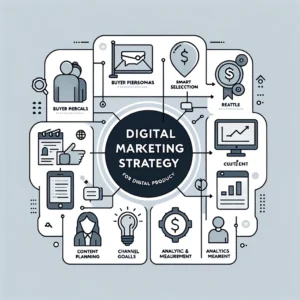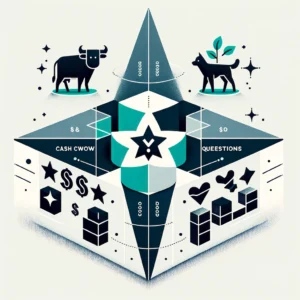Product development is a crucial process for businesses aiming to stay competitive in today’s dynamic market. It involves the creation, design, and launch of new products or the improvement of existing ones. Successful product development requires a deep understanding of customer needs, market trends, and technological advancements.

In this article, we will delve into the intricacies of product development, exploring its definition, key stages, best practices, and real-world examples. By the end, you will have a comprehensive understanding of how product development drives innovation and business growth.
Understanding Product Development
Product development encompasses the entire journey of transforming an idea into a tangible product that meets customer demands. It involves a series of strategic and tactical activities, including market research, concept development, prototyping, testing, and commercialization.
The Key Stages of Product Development
Product development can be divided into several distinct stages, each with its own set of objectives and challenges. Let’s explore these stages in detail:
1. Idea Generation
The first stage of product development is idea generation, where businesses brainstorm and identify potential product concepts. This can be done through internal brainstorming sessions, customer feedback, market research, or by analyzing emerging trends.
For example, Apple’s iPhone was born out of the idea to create a revolutionary mobile device that combines a phone, music player, and internet communicator. This idea generation stage is crucial as it sets the foundation for the entire product development process.
2. Concept Development
Once a promising idea is identified, it is further developed into a concept. This involves defining the product’s features, benefits, target market, and positioning. The concept development stage helps businesses evaluate the feasibility and potential success of the product.
For instance, Tesla’s concept development for their Model S electric car involved extensive research on battery technology, range, charging infrastructure, and target customer preferences. This stage ensures that the product aligns with market needs and business goals.
3. Design and Prototyping
Design and prototyping are crucial stages where the product concept takes shape. Designers and engineers work together to create detailed product specifications, considering factors such as aesthetics, functionality, materials, and manufacturing processes.
Prototyping allows businesses to test and refine their product before mass production. It helps identify design flaws, manufacturing challenges, and potential improvements. For example, before launching the first iPhone, Apple created numerous prototypes to perfect the user experience and design.
4. Testing and Validation
Testing and validation are essential to ensure that the product meets quality standards and customer expectations. This stage involves rigorous testing, both internally and externally, to identify any issues or areas for improvement.
For instance, pharmaceutical companies conduct extensive clinical trials to validate the safety and efficacy of new drugs. Similarly, software companies release beta versions of their products to gather user feedback and identify bugs.
5. Commercialization
The final stage of product development is commercialization, where the product is launched into the market. This involves developing marketing strategies, setting pricing, creating distribution channels, and establishing customer support systems.
For example, when Apple launched the first iPhone, they carefully planned their marketing campaign, secured partnerships with telecom providers, and ensured adequate product availability to meet customer demand.
Best Practices in Product Development
Successful product development requires a systematic approach and adherence to best practices. Here are some key strategies to consider:
1. Customer-Centric Approach
Understanding customer needs and preferences is paramount in product development. Conducting market research, gathering customer feedback, and analyzing trends help businesses create products that resonate with their target audience.
For instance, Amazon’s Kindle e-reader was developed based on the insight that customers desired a portable device to read digital books. By focusing on customer needs, Amazon revolutionized the publishing industry.
2. Cross-Functional Collaboration
Product development involves multiple departments, including marketing, design, engineering, and manufacturing. Encouraging cross-functional collaboration ensures that all aspects of the product are considered and integrated seamlessly.
For example, when Nike developed their Flyknit technology, collaboration between designers, engineers, and manufacturing experts was crucial to create a lightweight and flexible shoe.
3. Agile Methodology
Adopting an agile methodology allows businesses to respond quickly to market changes and customer feedback. It involves iterative development, frequent testing, and continuous improvement throughout the product development process.
For instance, software companies often use agile methodologies like Scrum or Kanban to develop and release new features in short cycles, ensuring rapid innovation and customer satisfaction.
4. Risk Management
Product development inherently involves risks, such as technical challenges, market uncertainties, and competitive threats. Implementing effective risk management strategies helps businesses mitigate these risks and increase the chances of success.
For example, pharmaceutical companies invest heavily in clinical trials and regulatory compliance to minimize the risks associated with bringing new drugs to market.
Real-World Examples
Let’s explore some real-world examples of successful product development:
1. Apple’s iPhone
The iPhone revolutionized the mobile phone industry by combining a phone, music player, and internet communicator into a single device. Apple’s relentless focus on user experience, design, and innovation propelled the iPhone to become one of the most successful products in history.
2. Tesla’s Model S
Tesla’s Model S electric car disrupted the automotive industry by offering long-range electric vehicles with cutting-edge technology. Tesla’s product development approach prioritized battery technology, charging infrastructure, and superior performance, setting new standards for electric vehicles.
3. Google’s Search Engine
Google’s search engine transformed the way people access information online. Through continuous product development, Google refined its search algorithms, introduced new features like voice search and personalized recommendations, and became the dominant player in the search engine market.
Conclusion
Product development is a complex and iterative process that drives innovation and business growth. By understanding the key stages, best practices, and real-world examples, businesses can enhance their product development capabilities and create products that meet customer needs and exceed expectations.
By adopting a customer-centric approach, fostering cross-functional collaboration, embracing agile methodologies, and effectively managing risks, businesses can navigate the product development journey with confidence and achieve success in today’s competitive market.



